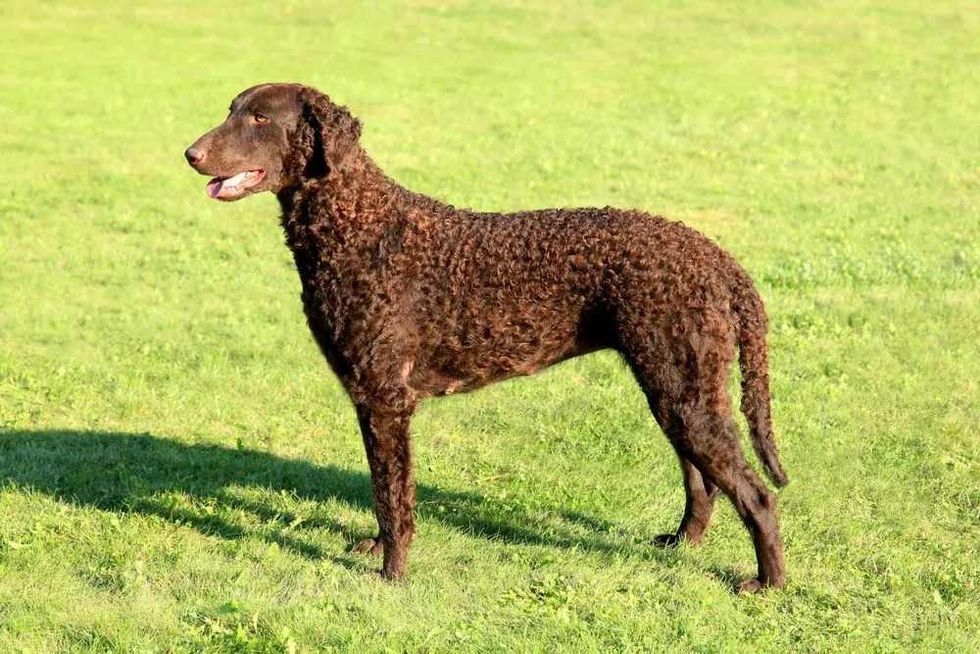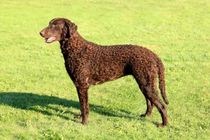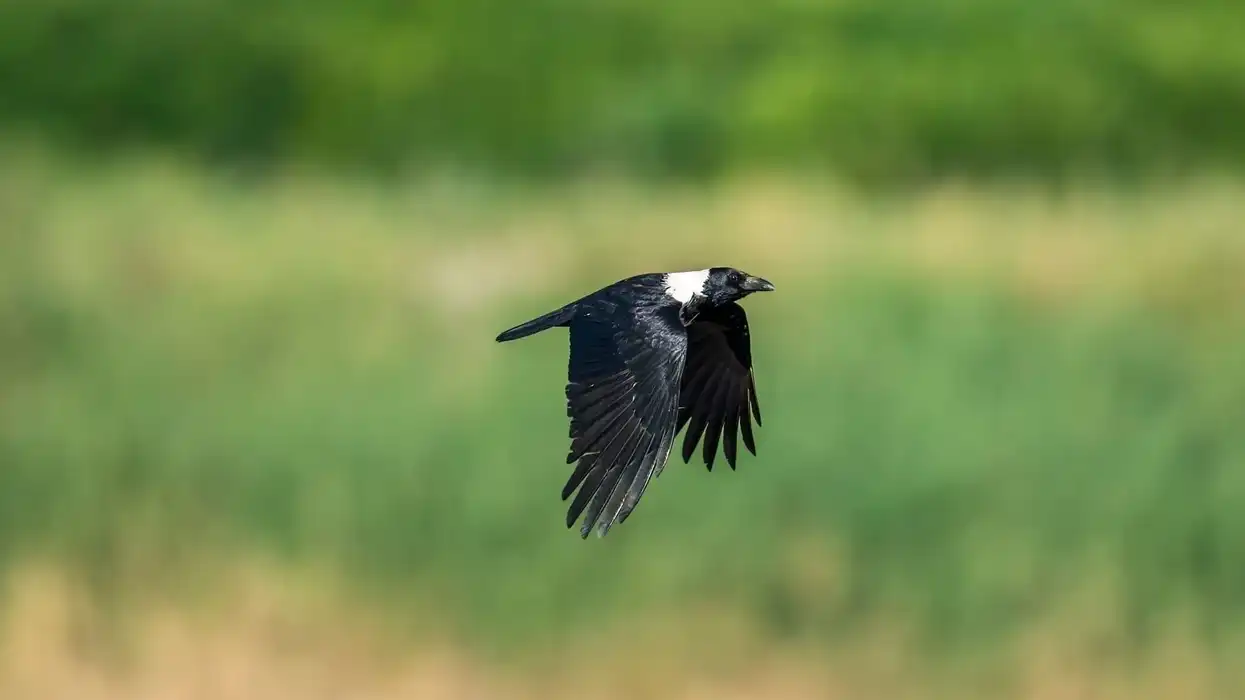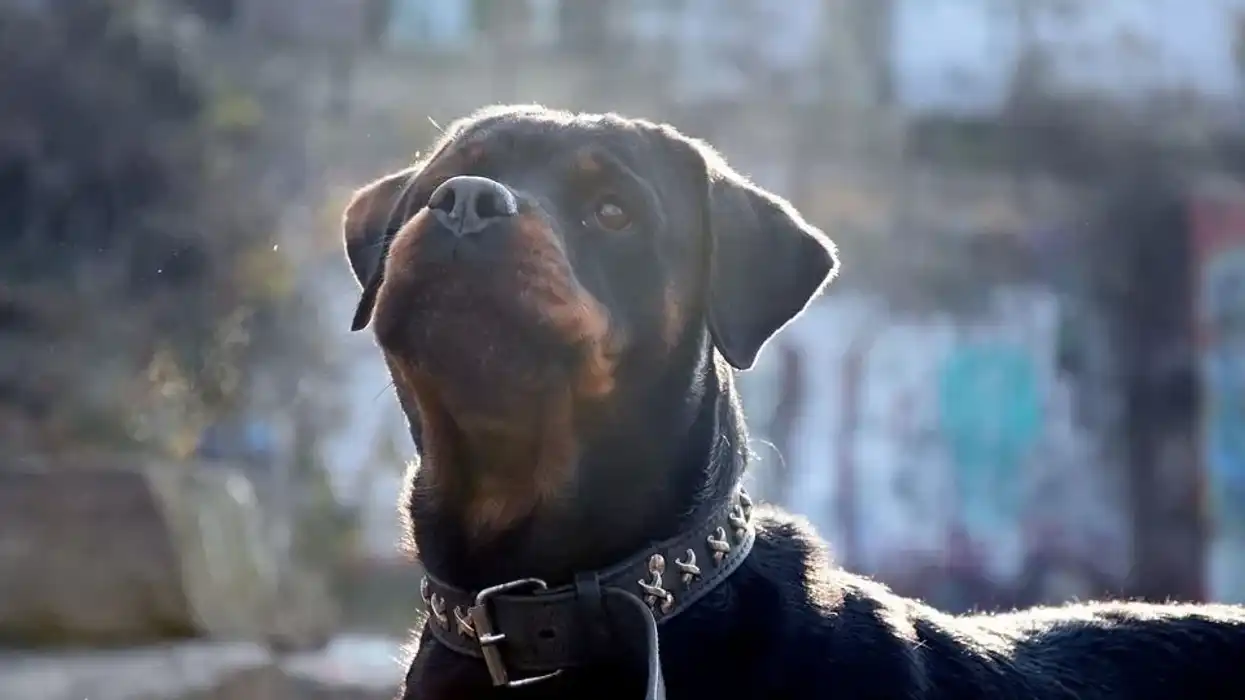Fun Curly-coated Retriever Facts For Kids

Curly-coated retrievers are sporting dogs bred and trained to retrieve both on land as well in the water. In the early 1800s, this dog breed was bred in England from retrievers and Old English Water Spaniel breeds, making them an old presence in the breed of retrievers.
The flat-coated retriever and curly-coated retriever were the first recognized retriever breeds in 1860.
This breed has a particular coat that is either black or reddish-brown and covers the dog in tight, short curls everywhere except for the feet, lower forelegs, forehead, and face. In the year 1924, this breed was registered by the American Kennel Club.
The temperament of these dogs makes them tireless workers and an ideal family dog, they are trainable, intelligent, and sturdy.
Unlike other retriever breeds that are social towards even strangers, the curly-coated retriever needs to be socialized with friends and family members in an effort to boost their confidence.
These dogs need sufficient exercise for at least 30-60 minutes a day to keep them active as they are good sporting dogs, otherwise, they might turn up destructive due to boredom and they are inclined to chew and nip everything in their reaches such as clothes and toys.
These curly-coated retrievers take longer to mature than any other retriever breed, which means that they might end up behaving like a puppy even after becoming three years old.
For more relatable content, check out these pocket pitbull facts and lab chow mix facts for kids.
Curly-Coated Retriever Interesting Facts
What type of animal is a Curly-Coated Retriever?
The curly-coated retriever is among the oldest and tallest recognized retriever breeds, which was originally bred in England. Curly-coated Retrievers were among the first two retriever breeds that were recognized earlier in 1860.
What class of animal does a Curly-Coated Retriever belong to?
The curly-coated retriever belongs to the Mammalia class of animals.
How many Curly-Coated Retrievers are there in the world?
The accurate population of curly-coated retrievers is unfeasible to determine as these breeds have made their home in many hearts because of their adaptability traits and are domesticated across the world.
Though this dog breed is not available in the wild, by breeding privately many breeders add a large number of curly-coated retrievers. These dog breeds are very popular hunting dogs in Australia and New Zealand other than the Australian Terrier and Sighthound.
Where does a Curly-Coated Retriever live?
The curly-coated retriever was first bred in England in the early 1800s. This retriever breed is among one of the peerless swimmer dog breeds and versatile gundogs. Curly-coated retrievers are people-friendly, and they enjoy spending time with family members in households.
What is a Curly-Coated Retriever's habitat?
A curly-coated retriever is an outdoor as well as an indoor animal and is the best pet given they are properly trained and supervised for families with children. These dogs are very energetic and love to play, so given their large size, a household with a garden or a park nearby is recommended.
Who do Curly-Coated Retrievers live with?
Curly-coated retrievers are a people-friendly breed. These dogs tend to live in the company of people and if left alone they might tend to become mischievous and chew on clothes and shoes. They are seen following their masters and are involved with all the family members.
How long does a Curly-Coated Retriever live?
The average lifespan of a curly-coated retriever is 10-12 years. If not properly cared for or the neglect of their routine vaccinations and other health checkups may affect their lifespan.
How do they reproduce?
A curly-coated retriever puppy reaches its adolescence at about six months and they are sexually mature at the age of 10-11 months old. After mating the gestation period for this curly coated retriever lasts around 60-63 days. The female gives birth to six to eight puppies.
What is their conservation status?
The conservation status of the curly-coated retriever is currently not listed on the IUCN Red List. We can assume that the population of these dogs is in abundance due to their huge popularity and demand.
The curly-coated retriever is a breed that can be found all over the world and it is bred all across the globe, which means that this breed is safe and will thrive well without worrying about the numbers for a longer time.
Curly-Coated Retriever Fun facts
What do Curly-Coated Retrievers look like?

Curly-coated retrievers have a single coat of fur with no undercoat and generally have black or reddish-brown coats with few white hairs in the coat, which is extremely easy to maintain as they have small tight curls of a show-standard dog breed.
Curlies that are kept as a companion for hunting animals need not be groomed in detail but they should be kept clean for their health. All curlies do shed but not to the same level that other dogs with undercoats shed; they usually shed during the spring or in places with extreme seasonal temperature change.
Female curlies usually shed more heavily twice a year during their heat cycles.
How cute are they?
The curly-coated retriever is cute to the core. These dogs with curls are energetic and love to run around and play with their owners. This water dog is always looking for attention and will do anything to get it from family members! Curly puppies are cuter than adult curlies and will make you gaze at them in awe!
How do they communicate?
The curly-coated retriever is known to be an energetic species of dog, and they bark do bark a lot. They nip their owners and try to make conversation with their owners.
Like other retriever breeds of dogs, curlies communicate through auditory signals and vocalizations like whimpering, barking, growling, sighs, and pantings.
How big is a Curly-Coated Retriever?
A curly-coated retriever is a large, elegant, and sturdy member of sport dogs similar to other retriever breeds. An adult curly-coated retriever can grow up to a height of 22.8-27.2 in (58-69 cm) and are a bit taller than the Belgian Tervuren which grows up to 21-26 in (53.3-66 cm) in height. This height difference is almost negligible.
How fast can a Curly-Coated Retriever run?
The curly-coated retriever can reach speeds of up to 38 mph (61.1 kph). These Curlies are very energetic and require a lot of outdoor and training. They are a hunting sport dog breed, they can turn aggressive towards small animals and start chasing them even into the water.
How much does a Curly-Coated Retriever weigh?
The weight of a curly-coated retriever differs according to their sex, and the average weight of these dogs ranges between 50.7-90.4 lb (23-41 kg). A male curly-coated retriever generally weighs more than a female.
What are the male and female names of the species?
Similar to all dog breeds, a male curly-coated retriever is called a dog and a female curly-coated retriever is called a bitch.
What would you call a baby Curly-Coated Retriever?
A baby curly-coated retriever is called a puppy.
What do they eat?
The curly-coated retriever's diet consists of high-quality dog food, which can be homemade food and canned food and it is recommended to feed these dogs three to four cups a day.
Are they slobbery?
Curly-coated retrievers do slobber but not too much. In fact, these breeds are the best example of a dog species that drool very little. Drooling can be very normal among other breeds of dogs as it is an unintended flow of saliva, or it could also indicate a health concern.
Many families that typically stay away from animals because of their drooling issues or leaving their sweaty paw prints all over the places, then the curly-coated retriever is perfect for them as they have minimal drool.
Would they make a good pet?
The curly-coated retriever is persistent and its retrieving ability and energy levels are so high that it will work until the job is done, and they will make a good pet. Whether they are at home or outside, they will always be self-confident and alert.
These sporting and hunting dogs have an even temper but when it comes to strangers they are extremely reserved with strangers than other retrievers.
You need to socialize them at an earlier age and exposure them to many people, sounds, and sights to prevent timidity. This dog takes longer to mature when compared to other breeds.
The curly-coated retriever needs a confident owner as they have a mind of their own, they should not be allowed to run the show on their own. These breeds are a little slow when it comes to training but that doesn't mean that they do not respond well to training, they might tend to become bored very easily.
Proper health maintenance is required for the dogs as this breed is vulnerable to a life-threatening stomach condition known as bloat, and gastric dilatation-volvulus (GDV).
Did you know...
These breeds can compete in dog sports such as flyball, field trials, obedience, agility, and retrieving abilities, they are also used as drug-sniffing dogs, therapy dogs, and search and rescue dogs.
A curly-coated retriever does not have an undercoat, and the female curly will usually shed their coat approximately every six months during the breeding period. During the shedding period, a rake-type grooming tool with metal prongs should be used for removing the dead hair, and then the coat can be trimmed.
This breed does not require extensive grooming though most of the owners never brush their retriever, which makes their coat frizzy. To enhance the tight crisp curls a wet-down and air-dry is easy to do and often will enhance the curls.
The nails of this breed need to be regularly trimmed but it does not need frequent baths like other breeds.
Grooming can be done by the owners or you can get professional help. This breed usually has an oily coat, which can cause allergic reactions to many people.
The curly is an active hunting dog, while hunting they are extremely persistent and eager all day long. These breeds are great multi-purpose hunting partners as they are good at retrieving both feathers and fur in any condition, even if it is icy water.
The hunting legacy of these agile and quick dogs means that they require plenty of exercise. You should include swimming and retrieving things from the water as an exercise for these dogs as well.
How much exercise does a Curly-Coated Retriever need?
The curly-coated retriever is recognized among the oldest retriever breeds from the early 1800s, these dogs do need an ample amount of time for exercise and once they are done with their daily exercises they become calm and laid back enjoying their time with others.
This breed is easy to live with if they are given basic training of showing their good manners.
These dogs love to spend time outside and are happy to do some retrieving activities and yet they are happy to spend time indoors as well as at home with their family.
When training a curly-coated retriever, you need to be both firm and kind to the dog. If you are too rough with them they will turn tail and if you are too soft or unclear to them during the training period they will not pay attention to you at all.
This breed is an intelligent and smart dog that needs an owner who is smarter than them.
While training these dogs you need to avoid too much repetition as they might become bored and lose interest. So, you need to make sure that their training period and process are more energetic and fun.
Are Curly-Coated Retrievers good family dogs?
The curly-coated retriever is a family dog and a better companion for older children who can stand up to their energy level and large size, but they can be a little overpowering to younger children in the house who can be easily knocked down while playing.
You need to make sure to set up some ground rules when they are interacting with the children such as no biting, tail pulling, or ear pulling for the safety of both your children and the dog.
You should never leave a small child unsupervised with any dog.
Early socialization and interaction are the most important things that you need to do for these dogs for them to do very well with other dogs and animals. With adequate training time, these dogs will spend their indoor time laid back enjoying themselves with their family members.
Here at Kidadl, we have carefully created lots of interesting family-friendly animal facts for everyone to discover! Learn more about some other mammals from our pitbull Chihuahua mix surprising facts and cheagle interesting facts pages.
You can even occupy yourself at home by coloring in one of our free printable miniature Golden Retriever coloring pages.
Second image by Mattias Agar.
We Want Your Photos!
More for You
See All
Bachelor of Arts specializing in French with Film Studies, Bachelor of Arts (Year Abroad) specializing in Literature, History, Language, Media, and Art

Georgia StoneBachelor of Arts specializing in French with Film Studies, Bachelor of Arts (Year Abroad) specializing in Literature, History, Language, Media, and Art
Georgia is an experienced Content Manager with a degree in French and Film Studies from King's College London and Bachelors degree from Université Paris-Sorbonne. Her passion for exploring the world and experiencing different cultures was sparked during her childhood in Switzerland and her year abroad in Paris. In her spare time, Georgia enjoys using London's excellent travel connections to explore further afield.
Disclaimer
1) Kidadl is independent and to make our service free to you the reader we are supported by advertising. We hope you love our recommendations for products and services! What we suggest is selected independently by the Kidadl team. If you purchase using the Buy Now button we may earn a small commission. This does not influence our choices. Prices are correct and items are available at the time the article was published but we cannot guarantee that on the time of reading. Please note that Kidadl is a participant in the Amazon Services LLC Associates Program, an affiliate advertising program designed to provide a means for sites to earn advertising fees by advertising and linking to Amazon. We also link to other websites, but are not responsible for their content.
2) At Kidadl, we strive to recommend the very best activities and events. We will always aim to give you accurate information at the date of publication - however, information does change, so it’s important you do your own research, double-check and make the decision that is right for your family. We recognise that not all activities and ideas are appropriate for all children and families or in all circumstances. Our recommended activities are based on age but these are a guide. We recommend that these ideas are used as inspiration, that ideas are undertaken with appropriate adult supervision, and that each adult uses their own discretion and knowledge of their children to consider the safety and suitability. Kidadl cannot accept liability for the execution of these ideas, and parental supervision is advised at all times, as safety is paramount. Anyone using the information provided by Kidadl does so at their own risk and we can not accept liability if things go wrong.
3) Because we are an educational resource, we have quotes and facts about a range of historical and modern figures. We do not endorse the actions of or rhetoric of all the people included in these collections, but we think they are important for growing minds to learn about under the guidance of parents or guardians.







